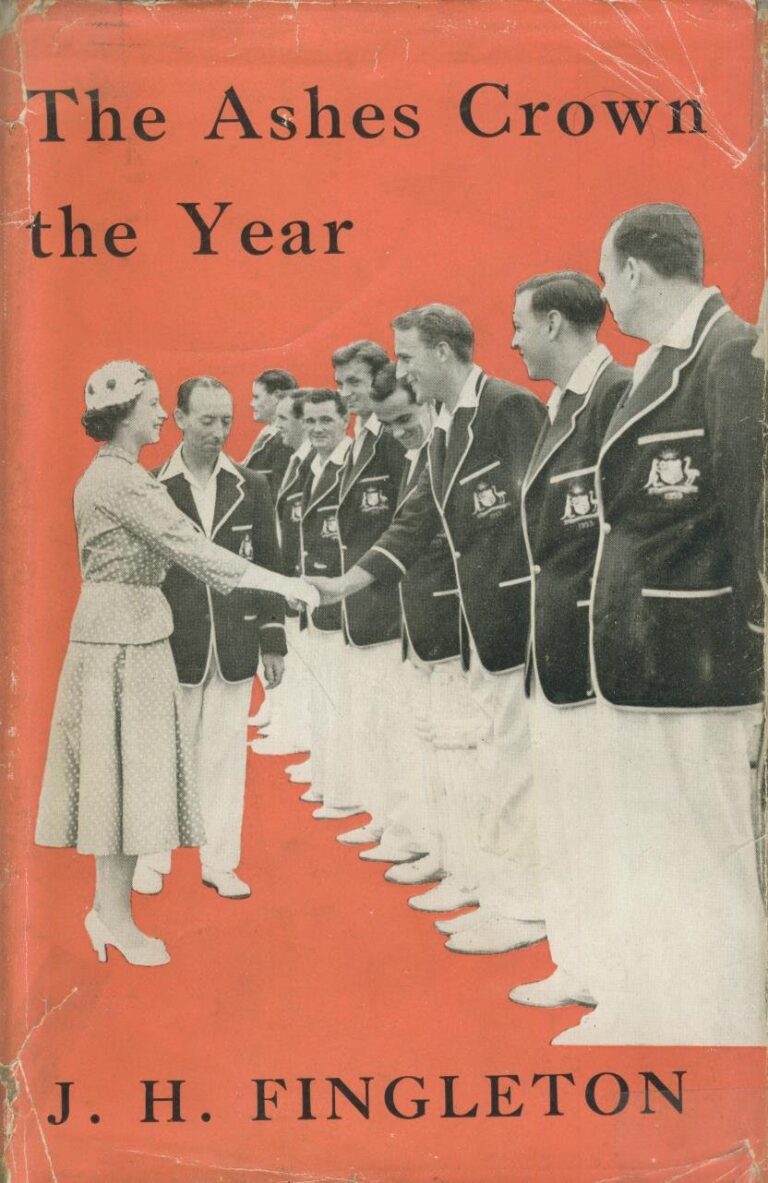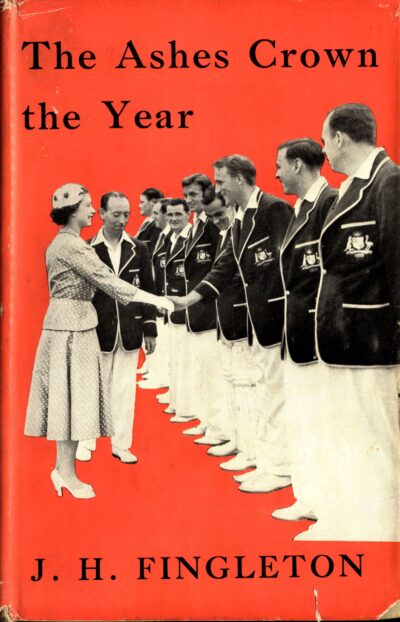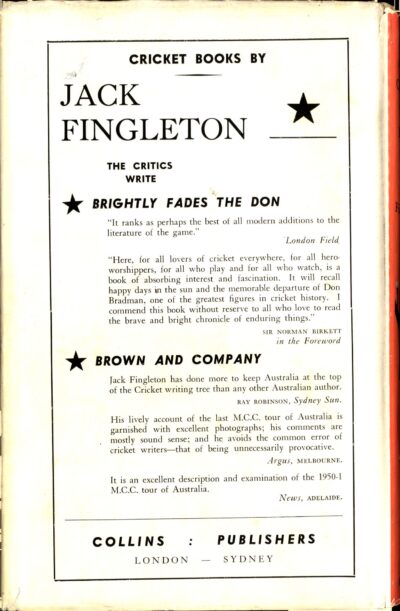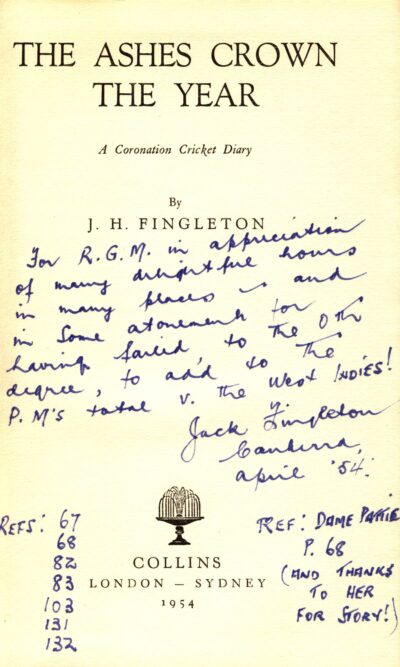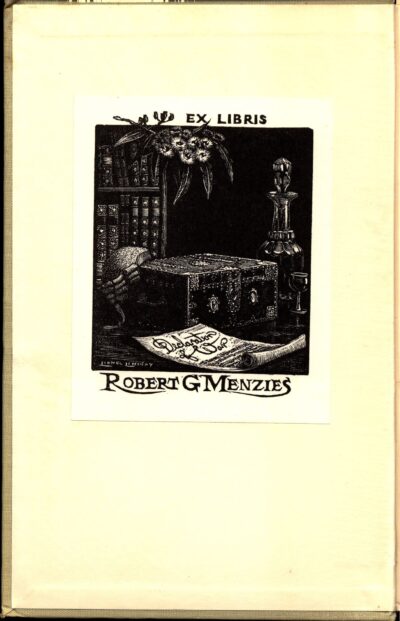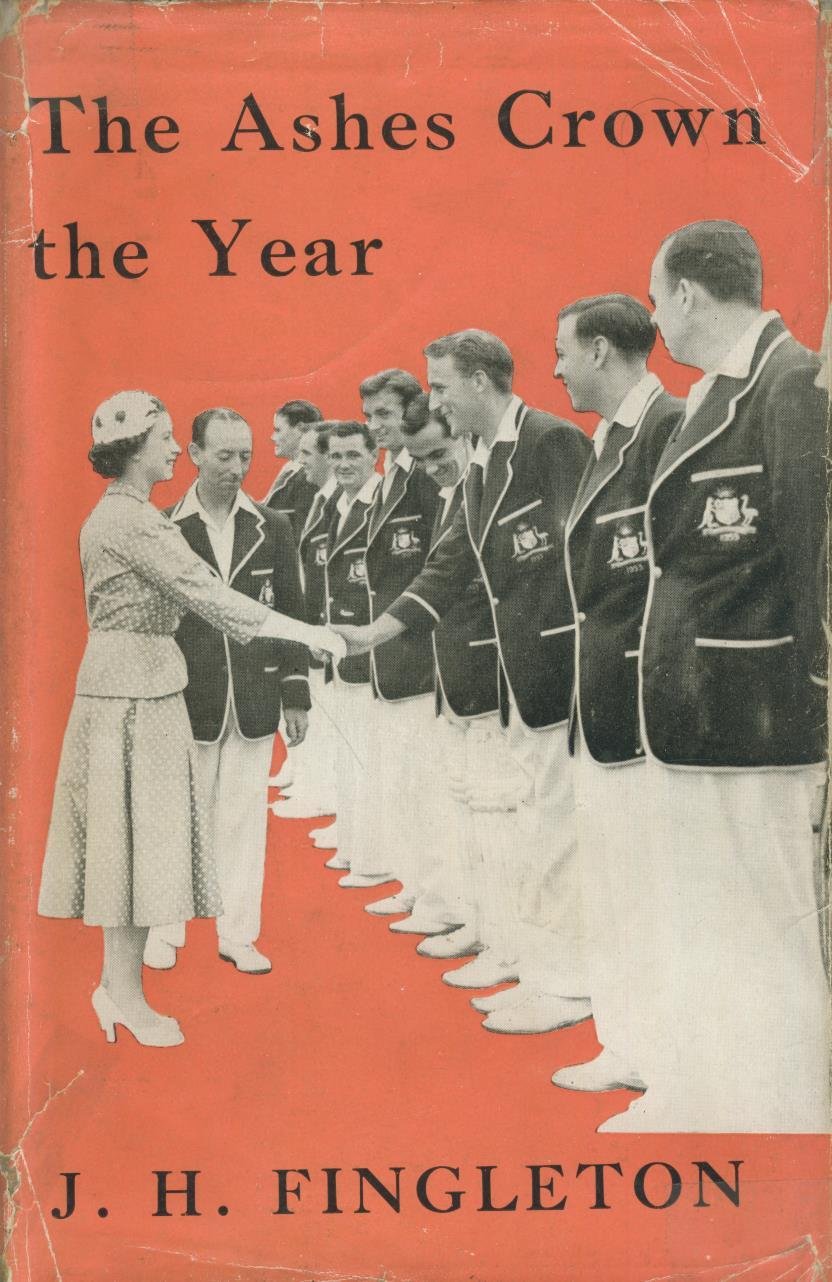J.H. Fingleton, The Ashes Crown the Year (1954)
Jack Fingleton was an Australian cricketer turned sports writer.
Born in Waverley in 1908, Jack was the son of a tram conductor whose father was elected as the Labor member for Waverley in the NSW Parliament. Educated at a Christian Brothers’ school, Jack showed a talent for both journalism and sport from an early age. At just 15 he was working for the Daily Guardian, and he would subsequently write for the Daily Telegraph Pictorial, the Sun and the Sydney Morning Herald.
First selected for the Australian Test Team as a right-handed batsman in the early 1930s, Jack was involved in the infamous ‘bodyline’ series of 1932-33, earning the respect of English fast bowler Harold Larwood who described him as ‘the bravest of cricketers’. In 1936 Fingleton became the first batsman to score centuries in four consecutive tests, achieving three in South Africa before scoring another to open the Ashes series in Australia. Spending most of his career as an opener, he was known for his ‘doggedness, courage and perseverance’, as well as his skill as a stroke-maker. Leaving cricket to enlist in the AIF during World War Two, he finished his career with a highly respectable Test batting average of 42.46.
In the military, Fingleton’s journalistic background saw him end up in the Press Relations Unit, and in 1943 he became Press Secretary for then leader of the United Australia Party Billy Hughes. Tasked with ‘moderating’ Hughes so that he would be less likely to antagonise US General Douglas Macarthur, Fingleton ultimately failed in reining Hughes in, but he did get to know Robert Menzies, with whom he became close friends. It was Fingleton who would suggest to Menzies that he institute the ‘Prime Minister’s XI’ match in 1951, which has since become an institution. Menzies would praise Fingleton by dubbing him ‘the best of cricket writers’, a statement which was frequently quoted to advertise his books.
The Ashes Crown the Year was Fingleton’s account of the 1953 Ashes series, held to coincide with Queen Elizabeth II’s coronation. Menzies attended both the crowning ceremony and several Tests that year, recalling vividly that during the coronation procession he kept the windows down on his horse drawn carriage despite terrible weather, in order that he could wave to his constituents – which in actual fact meant the Test team.
With his strong attachment to cricket and frequent run-ins with the team, Menzies features quite a few times in Fingleton’s book. He hosted the team for a farewell dinner in Canberra before they left – and the book relates that Menzies even kept a portrait of all-rounder Keith Miller in his office that he would look at in times of stress. In England, he again hosted the team for dinner at the Savoy Hotel, arranging that they be treated to Australian steaks, and engaging in quips with former England Captain Douglas Jardine. While Menzies could not get enough of the sport, the book makes it clear that it was not a love shared by his wife Pattie:
‘There is no keener cricketing enthusiast than our Prime Minister. Mrs. Menzies is not so keen. She tells the story of how she went to her first cricket match in Melbourne and saw Hobbs and Sutcliffe bat all day. This was a partnership of some distinction as it was played under difficult pitch conditions, but, knowing nothing of the finer points, all Mrs. Menzies knew at the end of the day was that she had watched only Hobbs and Sutcliffe. Some years later, in London, Mr. Menzies took her to her second cricket match—at Lord’s, England against Australia. The game unfolded to their view and—yes, you are right !— the two batsmen on view were Hobbs and Sutcliffe. “My goodness,” said Mrs. Menzies, “‘haven’t we been able to get these two out yet?”’
You might also like...
Sign up to our newsletter
Sign up for our monthly newsletter to hear the latest news and receive information about upcoming events.

